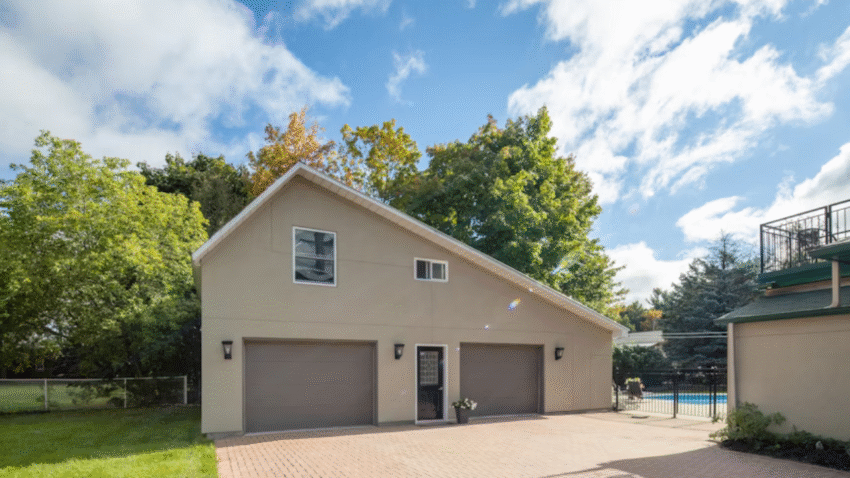Introduction
If you want to upgrade your garage from a bare, unfinished space to a clean, organized, and durable work area, wall panels are an excellent choice. They protect the walls, create a polished look, and can even provide extra storage or hanging capacity depending on the type you choose. Learning how to install wall panels in your garage will help you create a professional-grade finish while improving functionality.
Why Installing Wall Panels Matters for Your Garage
Garage wall panels aren’t just for aesthetics—they also serve practical purposes:
- Protection: Panels shield drywall or bare studs from dings, stains, and moisture damage.
- Durability: High-quality panels can handle the wear and tear of garage activities.
- Organization: Slatwall and pegboard panels let you hang tools and gear directly on the wall.
- Easy maintenance: Panels wipe clean more easily than painted drywall.
- Increased value: A finished garage looks more appealing to potential buyers.
From simple plywood sheets to sleek PVC slatwall systems, panels can transform your garage into a more functional and attractive space.
Step-by-Step Guide to Installing Wall Panels in Your Garage
1. Choose the Right Type of Panel
Your panel choice will depend on your budget, intended use, and preferred style:
- Plywood panels: Affordable and durable, great for work areas where strength matters.
- PVC or vinyl panels: Moisture-resistant, lightweight, and available in various colors.
- Slatwall panels: Perfect for maximizing vertical storage with hooks, baskets, and shelves.
- Fiberboard (MDF) panels: Smooth finish for painting, but less moisture-resistant—best for dry climates.
- Metal panels: Extremely durable and industrial-looking, but more expensive.
Pro Tip: For garages where you’ll hang heavy tools or equipment, slatwall or plywood provides the best strength and versatility.
2. Gather Tools and Materials
You’ll need:
- Chosen wall panels
- Tape measure
- Level
- Stud finder
- Pencil or chalk line
- Circular saw or jigsaw (for cutting panels)
- Drill/driver and screws (or nails if applicable)
- Screw anchors (if attaching to masonry)
- Safety gear: gloves, goggles, and dust mask
3. Prepare the Garage Walls
Clear the Area
Move vehicles, tools, and storage items away from the walls you’ll be covering.
Inspect for Damage
Check for water leaks, cracks, or pest issues—repair them before installation.
Locate Studs or Support
Use a stud finder to mark stud locations. If attaching panels to masonry or concrete, you’ll need masonry anchors and a hammer drill.
4. Measure and Plan Your Layout
- Measure wall height and width to calculate the number of panels you’ll need.
- Plan panel seams to minimize waste and ensure a clean appearance.
- Mark a horizontal reference line using a level for your first row—this keeps everything aligned.
Pro Tip: If using slatwall, start at the floor and work up for a neat fit.
5. Cut Panels to Size
- Use a circular saw for straight cuts or a jigsaw for cutouts (like around outlets or switches).
- Wear safety goggles and a dust mask when cutting.
- Label each cut piece to match its position on the wall for easier installation.
6. Install the First Panel
- Position the panel at your starting point, aligning it with your reference line.
- Drive screws into studs every 16 inches along the panel edges and center.
- For masonry walls, drill pilot holes and insert anchors before securing screws.
7. Continue Installing Panels
- Work from your starting point across the wall, locking or butting panels together depending on the type.
- Check each panel with a level before securing to avoid uneven seams.
- For slatwall, ensure each section is properly interlocked before fastening.
8. Handle Obstacles and Cutouts
- For outlets, switches, or fixtures, measure carefully and mark cutouts before installing.
- Always cut slightly smaller than the opening—you can trim as needed for a snug fit.
9. Finish Edges and Corners
- Use trim pieces or molding to cover panel edges for a polished look.
- For slatwall, install finishing strips along exposed edges.
Common Mistakes to Avoid
- Mistake: Skipping wall prep.
Solution: Always repair damage and mark studs before installing. - Mistake: Not checking for level alignment.
Solution: Use a level on each panel to maintain straight lines. - Mistake: Using the wrong screws for the wall type.
Solution: Match fasteners to your wall material (wood studs vs. masonry). - Mistake: Cutting panels without measuring twice.
Solution: Double-check all measurements to avoid wasted material. - Mistake: Ignoring expansion gaps for PVC panels.
Solution: Leave a small gap around edges in high-humidity areas to allow for expansion.
Extra Garage Tips & Hacks
- Combine Panel Types: Use plywood in work zones and slatwall in storage areas for the best of both worlds.
- Paint or Seal Panels: Add an extra layer of protection to plywood or MDF by painting or sealing them before installation.
- Plan Tool Organization in Advance: If using slatwall or pegboard, map out where your most-used tools will go before installing.
For a matching upgrade, see our guide on How to Paint Garage Walls for a Clean Finish before panel installation—it creates a fresh background and added protection.
Conclusion
Installing wall panels in your garage is one of the most effective ways to upgrade both appearance and functionality. With the right materials, careful planning, and proper installation techniques, you can create a durable, attractive wall surface that makes your garage more organized and easier to maintain.
Final Tip: Take your time with measuring and alignment—precise cuts and straight lines make the difference between a DIY look and a professional finish.
CTA: Bookmark this guide and use it to transform your garage walls into a polished, practical feature of your home.
